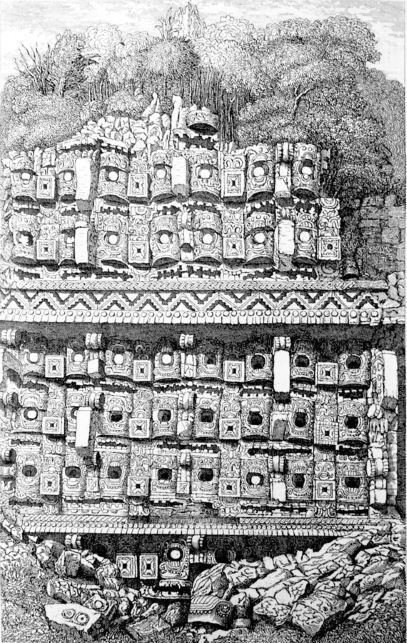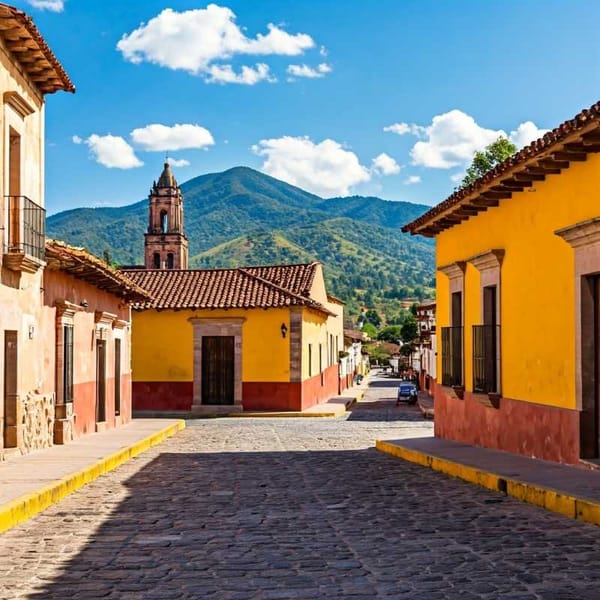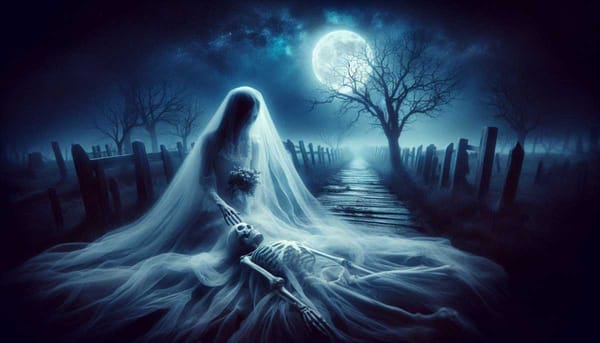Yuri Knorozov: Between Cyrillic and Mayan glyphs
A Russian linguist, epigrapher, and ethnographer named Yuri Valentinovich Knorozov played a critical contribution in deciphering the Maya script, the writing system employed by the pre-Columbian Maya civilization in Mesoamerica.

Yuri Knorozov lived under Soviet Stalinism, and yet he was a dedicated reader of Sherlock Holmes stories, which he probably ate up in secret. In 1941, he was 21 years old. People who knew him at the time called him "eccentric and brilliant." He played the violin and was interested in learning new things. His father taught him to write with both hands so that he could learn to use both sides of his brain. He liked music and was good at drawing. He was also good at languages and could read Arabic, Chinese, and Greek.
Yuri Valentinovich Khoronozov left his quiet life in Kharkiv, Ukraine, to join the great patriotic war against the Germans. This war started on June 22, 1941, when Hitler ordered the invasion of the Soviet Union in a fit of arrogance. A Russian soldier in battle only lived a few days on average, and the way they fought against the Germans is unimaginable. But Yuri was able to stay alive for four years and made it to the capital of the Third Reich in time for the final attack on Berlin on April 16, 1945.
The German capital was taken over the house by house and street by street. In the last days of April, before the square fell, Yuri took refuge inside the burning National Library. He was trying to get closer to the city center, where Hitler's bunker was before the square fell.
Yuri was moved by the thousands of books that were being burned. Even if it meant risking his life, he took a break from his military duties to save two books that would change his life: Fray Diego de Landa's Relationship of the Things of Yucatan and a facsimile edition of The Maya Codices. He put them in his battle pack, grabbed his weapon, and went back into battle. The hammer and sickle flag flew over the destroyed Reichstag on May 2, 1945.
Years later, in an interview, Knórozov denied that the Berlin library was on fire and that he was inside when he took the two works on the Mayans: That's a legend. There was no fire. The German authorities prepared the library for evacuation and to take it, supposedly, to the Alps in Austria. The books placed in boxes were in the middle of the street. So I picked out two.
Fray Diego de Landa and Yuri Kurozov
In the second half of 1945, Yuri Knorozov went back to Russia with two books that he had been able to keep without being accused of being influenced by Western ideas. Abbot Brasseur de Bourbourg published and added notes to an edition of The Relation of the Things of Yucatan in 1864 in Paris. He had this copy. The other book was a facsimile edition of three codices. It was written by Antonio and Carlos Villacorta and published in Guatemala in 1933.
It was the Madrid Codex, which had horoscopes and astrological tables. The original, according to the first letter of relation, was sent by Hernán Cortés to Carlos V. It was followed by the Paris Codex, which was thought to be a Mayan priest's guide because it described rites, ceremonies, prophecies, and a zodiac. Finally, there was the famous Dresden Codex, which explained the Mayan calendar and numbering system and was probably written before the conquest.
Galina Ershova, one of his students wrote Maya Epigraphy. Introduction to Yuri Khorov's Method and insists that his family of intellectuals sparked his interest in the "mysteries of the human brain" when he was young. This led him to study history at the University of Kharkiv in 1939 and then ethnography and linguistics at the University of Moscow, where he became interested in Egyptology and the shamanism of some Central Asian cultures and even took part in archaeological expeditions. After he finished school, he got a job at the Center for Ethnic Studies in what was then Leningrad and is now St. Petersburg.
In 1947, his teacher, archaeologist Sergey Tokarev, gave him an article by German Mayanist Paul Schellhas, entitled "Deciphering Mayan scripts - an insoluble problem?" and told him, "If you believe that any writing system produced by human beings can be read by other human beings, why don't you try to read Mayan glyphs?" Knorozov accepted the challenge, which eventually materialized in his doctoral thesis in historical sciences in 1955.
Yuri didn't just try to figure out what the Mayan writing said; he also looked into the work of Fray Diego de Landa and was able to piece together the man and his time. He found evidence to show that the famous auto de fe of Man, where many cult objects and Mayan codices were burned, was not a result of a dogmatic view of the evangelization process to end idolatry at any cost, but of pressure from the conquerors, whose economic interests in the area put the friar's stay in Yucatán at risk because they could accuse him of heresy if he didn't act against pagan practices.
In an article co-authored with Galina Ershova, entitled "Diego de Landa as the founder of the study of Maya culture", Knórozov succeeded in vindicating Fray Diego de Landa. In his opinion, the Franciscans had a "sharp natural intelligence, strong character, and firm principles". He had arrived in Yucatán at the age of 24 and, in addition to his missionary work, continued the work of Luis de Villalpando - head of the evangelizing mission before Landa's arrival - on Mayan language, culture, and science.
Landa began to write the Relación de las Cosas de Yucatán (Relationship of the things of Yucatan) in 1566, four years after the famous auto de fe, carried out on July 12, 1562, in which the friar himself had thrown into the flames several codices -it is said that there were forty of them- that contained part of the Maya historical memory.
The legend of Fray Diego de Landa points out that he wrote his work as an act of repentance for having destroyed the memory of the Maya. But his real intention -according to Knórozov- was to record the method by which the newly arrived missionaries "could master the Mayan language in three months".
After carefully studying the work of Fray Diego de Landa, Knórozov and Ershova concluded that during the last four centuries not a single scientific description had emerged that could compare with Landa's work "both for its richness and accuracy and for its universal character", but they went further by pointing out that "we have no reason to doubt the alphabet written down by him".

The syllabary
Genius lies in the possibility of observing reality from a point of view different from that of ordinary people. Knórozov was a smart scholar who had moments of brilliance. He was able to figure out what Fray Diego de Landa had written hundreds of years before by looking at it, not from an archaeological but a linguistic point of view.
He began by learning Spanish. All he knew about Mexico and Yucatan in particular came from books and papers. During the Cold War and the end of Stalinism, when Knórozov was studying, he never had the chance to leave the Soviet Union to go to Mexico. He never saw the inscriptions, sculptures, stelae, or great Mayan cities for himself. His research was done in his office in Leningrad, and it was there that he found the phonetic code for Maya hieroglyphic writing.
Scholars of the Mayan world, especially those researchers who belonged to the capitalist bloc, such as the Englishman Eric Thompson, maintained that the Mayan writing was based on logograms: each symbol would correspond to a complete word, but lacking the context in which they were written, according to this thesis it was practically impossible to decipher them.
Yuri concluded that the "hieroglyphic alphabet" contained in the work of Fray Diego de Landa was, without more, a syllabary and launched his thesis in the Soviet journal Ethnography in 1952 -only seven years after returning from the war. His study, however, was not well received, and was even severely attacked; the Cold War environment was conducive to Western Mayanists -particularly Thompson- rejecting the work of a "communist", and even more so if he had not done field research in Mexico.
Knorozov's discovery was accepted worldwide until the 1970s; his interpretation of Fray Diego de Landa's alphabet has been equated to the discovery of the Rosetta Stone which provided the key to deciphering the Egyptian hieroglyphs. However, it was hidden for decades from the eyes of the world.
He managed to leave the Soviet Union until 1991 when the communist regime was disintegrating. He traveled to Guatemala and in 1995 he visited Mexico. On March 31, 1999, Yuri Khoronozov passed away in his beloved St. Petersburg. He finally closed the circle of history that intertwined him with Mexico since April 1945, when the rescue of two modest books marked the destiny of his biography.
By Alejandro Rosas, Source: Revista de la Universidad de Mexico




